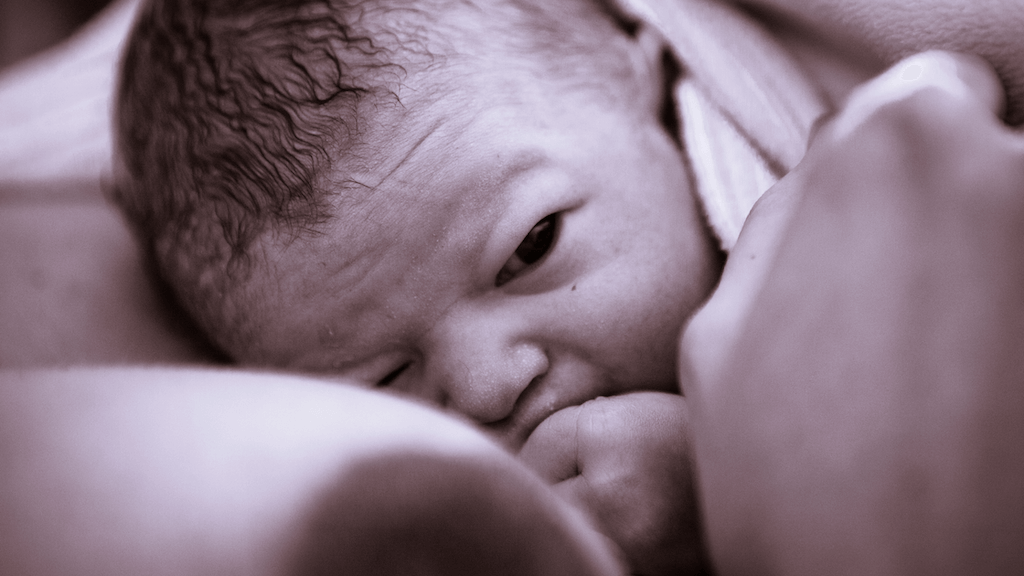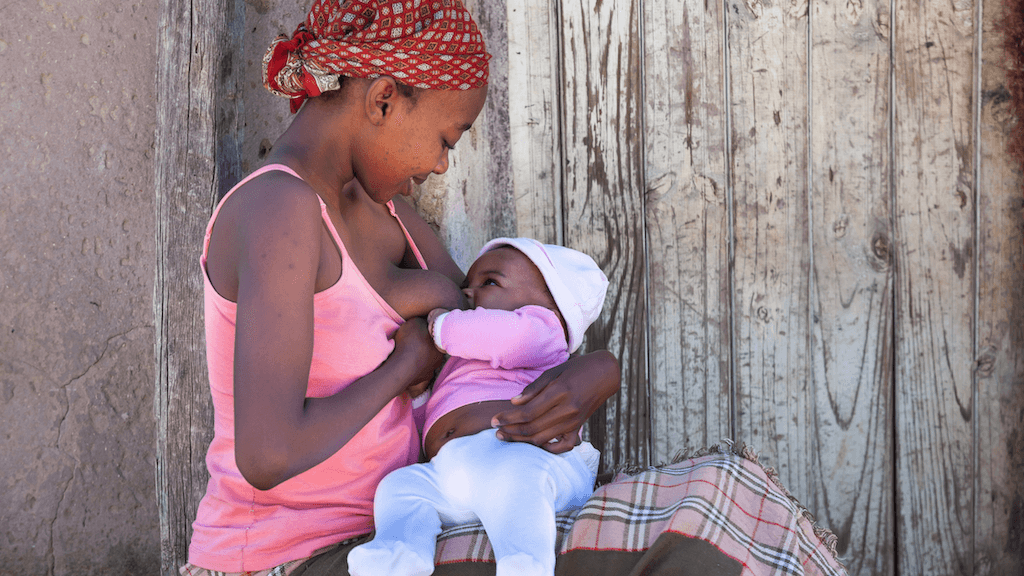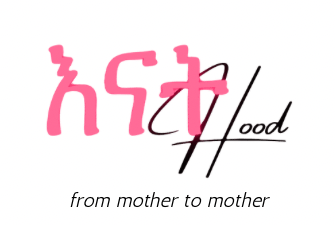
Congratulations mama!! I assume you just have your baby, want to breastfeed, and have some questions. Or you need some tips to make breastfeeding a little easier.
Do you want to increase your supply? Maybe you just got pregnant and want to learn about breastfeeding ahead of time.
In any case … I got you!! I have been there. Hope the information here will empower you and help you establish great breastfeeding from the get-go. Or I hope it answers some of your questions.
Breastfeeding is very rewarding.
It is very natural and has a lot of benefits both for your baby and yourself.
I will talk about its benefits in depth later on but I do admit breastfeeding can be difficult in the early days even weeks. I remember I almost gave up, but somehow I and my baby figured it out and I continued.
Now I am so GRATEFUL I didn’t give up. I am still breastfeeding and it has been more than a year now. You have no idea how happy I am. I have seen the benefit for my baby and myself.
So let’s talk about the best practices, my experience, and everything you need to know about breastfeeding.
First of all, your body is designed to breastfeed.
Mama, don’t doubt your ability to breastfeed!!
During pregnancy, your body gets ready to breastfeed. Science says it’s the fourth month of pregnancy, your breast starts making colostrum, the first milk for your baby.
This must be true, I noticed my breast started making colostrum between 6-7 months of my pregnancy. Colostrum, some people call it golden milk because it is usually yellow. It is a very important food for your baby for the first few days after birth.
Colostrum will boost the baby’s immune system.
It is a natural vaccine you could give to your baby early on as it carries antibodies. Colostrum also helps the baby poop because it has a laxative effect. Especially the first sticky black tar-like poop called meconium, which the baby stores since before birth. It also lowers the chance of jaundice, a condition where the baby’s skin and eyes turn yellow.
Benefits of Breastfeeding
The benefits of breastfeeding are well acknowledged by the American Academy of Pediatrics (AAP) and the World Health Organization (WHO).
Both AAP and WHO recommend early initiation of breastfeeding within 1 hour after birth, exclusive breastfeeding for 6 months, and continue breastfeeding at least for 1 year or as much as possible.
Also, a lot of researches are emerging and confirming breastfeeding benefits. Let’s see the benefits one by one:
Breastfeeding Benefit for The Baby
Breast Milk is Perfectly Designed, Complete Food, and Changes Regularly to Meet the Baby’s Nutritional Needs.
Breast milk contains what the baby needs to grow from fat, carbohydrates, water, to hormones and antibodies.
The surprising fact is that breast milk components change as the baby grows.
Can you believe it? The breast milk produced for a premature baby is higher in protein and calories than milk produced for a full-term baby, giving the tiny baby what it needs, to catch up on growth.
In cold climates, breast milk contains more fat whereas in warmer climates, more water. If your baby is very hungry, he nurses more strongly and receives more fatty hindmilk. While just thirsty, he feeds more leisurely and receives lower-calorie milk. Isn’t it incredible how our body works?
Human Milk is Biologically Specific for Human Babies
Like other mammals milk is specific to their babies. For eg. Cow’s milk is high in protein, minerals, and growth hormone because the baby calf should be up and running within hours after birth. Muscle and bone growth is important for their survival.
Whereas for humans, the brain is our survival organ. Human milk is high in important nutrients that promote the growth and development of the brain.
I believe that’s why a study shows breastfed babies tend to score high in intelligence quotient (IQ) tests.
Breastfed Babies Have No or Fewer Ear Infections, Colds, Diarrhea, and Constipation.
This study shows just one month of breastfeeding reduces the chance of ear infections by 4% and six months of breastfeeding reduces ear infections by 17%. Also according to this study, breastfeeding reduces the severity of colds.
Again, colostrum contains a large number of antibodies that helps to build the immune system. (source)
Here I share my experience as evidence. As I said our baby has been breastfeeding for more than a year now, he never had any kind of infections, colds, diarrhea, or constipation.
We never ran to the emergency room or he needed to take antibiotics despite letting him play on the ground and the environmental change he faced when we traveled to Ethiopia when he was only 10 months old.
Reduces the Risk of Developing Obesity and Diabetes Later in Life.
Breastfed babies less likely develop obesity and diabetes late in their life compared to formula fed babies. (source)
Minimizes the Risk of Sudden Infant Death Syndrome (SIDS).
This study shows SIDS reduced by half in breastfed babies in the first two months.
Breastfeeding Promotes Bonding.
When a baby breastfeeds, the skin-to-skin contact builds trust and love between the baby and the mother. This study shows breastfed babies less likely to internalize problems and suffer from depression later in life.
This is not to imply in any way that mothers can’t bond with their bottle-fed babies, but there is a unique closeness between a mother and her nursing child as breastfeeding is not only feeding but also very comforting for the baby.
Breastfeeding Benefits for The Mother
Breastfeeding Could Faster Your Recovery from Childbirth
When you breastfeed, a hormone called oxytocin is released and signals your uterus to contract which decreases the chance of excessive bleeding and helps your uterus to get back to pre-pregnancy size.
That’s why it is recommended to introduce breastfeeding in the first hour after birth. Again, isn’t it amazing how nature works? I am always astonished!!
Breastfeeding Reduces the Risk of Postpartum Depression
During breastfeeding the release of hormones like prolactin and endorphins helps you feel calm and connected with your baby.
Study shows breastfeeding prevents drastic drop of prolactin after delivery that scientists believe is one of the causes for postpartum depression.
Lower the Risk of Breast and Ovarian Cancer
Research shows a woman’s risk of developing breast cancer reduces by 7% for each baby she has breastfeeds and a further 4.3% for every 12 months she breastfeeds.
May Help You Lose Pregnancy Weight Faster.
When you breastfeed you burn about 600 calories a day. I believe one of the factors that helps me to lose pregnancy weight and maintain a healthy weight after delivery without dieting is breastfeeding.
Breastfeeding is Easier than Bottle-feeding.
Think about it, breast milk is always ready, it is always at the perfect temperature, doesn’t need to be measured, doesn’t need refrigeration or a warmer, no need to wash and sterilize bottles. See how much work is minimized?
Especially at night, when you travel or when you are out and about, you don’t need to carry anything!!
Breastfeeding is Inexpensive.
Formula cost on average $100 – $200 per month depending on the baby’s weight and age. If you want Hypoallergenic formulas, it even costs a lot more.
The First Hour After Delivery
Oh mama, this is a magical hour!! Your joy is over the moon. You just met your precious baby after a long nine-plus months wait. Congratulations again.
So as soon as the baby is born, the baby should be placed on your chest. Most of the time the nurses do that for you unless the baby needs further medical care. If the nurses don’t bring your baby for skin to skin and prioritize the things they need to do like weighting and other things, ask for it. You deserve to meet and hold your baby!!
When the baby is placed on your chest, the skin-to-skin contact will comfort your baby. Then the baby naturally starts to look for your breast and nipple.
It is incredible to watch your baby crawl to your breast and start feeding. Incase the baby doesn’t show interest, try to help the baby feel, smell, and taste your nipple. If the baby still doesn’t show interest, ask for help.
It is important to introduce the breast in the first hour or so of life because it stimulates your breast to produce milk, which results in a reliable establishment of milk supply.
Avoid a pacifier and a bottle as much as possible as it might confuse your baby and make it harder to learn how to latch and breastfeed.
As a general guideline, it is recommended to introduce a pacifier and a bottle when the baby is around 3 months old, which is after the good establishment of breastfeeding.
When I gave birth to my baby, I got the chance to make skin-to-skin. As I said it was incredible how he immediately started crawling to my breast and started suckling.
Since we were able to initiate breastfeeding in the first hour after birth, I haven’t struggled with the milk supply. My baby wasn’t confused with a pacifier or a bottle. It was a great start!!
My breastfeeding struggle comes later which were engorgement, sore nipples resulted from wrong latches, excess milk supply, and thrush. Keep reading, I will address all of them.

How to Help Your Baby Latch Correctly
- Try breastfeeding within the first hour after birth. Choose a comfortable posture for breastfeeding. Use pillows for support.
- Hold your baby close to your body. Support the baby’s head with your hand so that his nose is in line with your nipple. Touch your baby’s nose and upper lips with your nipple. It helps the baby open its mouth.
- Wait until the mouth opens wide
- When the mouth opens, quickly bring the baby onto your nipple and breast so that the baby gets as much breast as possible, resulting in a deep latch.
- With a deep latch, the mouth is wide open. Both of your baby’s lips are flipped out, not pulled in.
If you feel painful tugging or pinching, slide your finger into the corner of the baby’s mouth to break the suction and try again. It is okay. It may take a few tries to get a good comfortable latch.
How Can You Tell Your Baby Is Breastfeeding Well
- You hear or see sucking motions and swallow
- Once the baby holds your nipple and starts latching, you are not feeling sharp pain. Gentle tugging is normal. Sharp pain is an indication of a wrong latch.
- Baby signal signs when he is full. Such as: let go of your breast and nipple on its own, fall asleep, relaxed hand and body.
How Can You Tell If Your Baby Is Getting Enough
Generally, breastfeeds 8-12 times a day including 1 or 2 nighttime feeding is how much a baby needs to be fed.
But since breastfeeding can’t be measured like bottle feeding, it is important to look for signs to know the baby is getting enough. These are some of the signs:
- The baby seems calm and full after feeding. If your baby let go of the breast, relaxed, and sleepy, the baby probably had good feeding.
- Your breast feels full before feeding and softer after feeding. In the first couple of days, your breast produces colostrum, then after your mature milk comes in, your breast will start to feel different: warmer, fuller, and heavier. So then, it is easier to tell the difference between your breast before and after feeding.
- Tracking wet and poop diapers. The first couple of days your baby poop black tarry, meconium, The color slowly changes to greenish and by day 4 – 5 a baby should be having yellowish seedy like poop which is the normal “milk poop”. You should count 4 or more wet diapers and 4 or more poopy diapers a day or about 10 diapers in total for the first month. After a month, a baby may only poop a few times a week.
- Tracking baby weight. Weight gain is the best way to tell if your baby is getting enough to eat. Newborns often lose weight in the first couple of days. Your baby should regain birth weight by day 10-14. Take a note of the baby’s weight at birth and weight when you leave the hospital within 24 – 48 hours and make sure the baby regains its birth weight in 2 weeks. This can also be checked with your health care provider at your 2 weeks follow-up appointment.
Moreover, Mama, use common sense and your mom’s intuition. You would know if something is wrong. And don’t hesitate to ask for help from the doctors, lactation consult, or nurses.
How Long Should You Breastfeed?
Any amount of breastfeeding is good!!
The longer you breastfeed, the better.
AAP recommends that you feed your baby only breast milk exclusively (feed only breastmilk, no formula, water, juice, or food) for about the first 6 months.
After 6 months, you can start introducing food and continue to breastfeed for as long as you and the baby desire. Any amount of breastfeeding is BENEFICIAL.

Tips for Sleepy Baby
Some babies sleep a lot and are not good at showing hunger cues like crying, opening their mouths, sticking out their tongue, or bringing their hands to the mouth.
If your newborn doesn’t feed at least 8 times in 24 hours, you need to wake your baby up to eat. Here are few tips to wake your baby up:
- Take off some of the baby’s clothes
- Try skin to skin
- Change baby’s diaper
- Gently touch your baby’s face, mouth, or rub your baby’s back, hands, and feet.
Sleepy babies should be encouraged to feed at least 8 times in 24 hours and have no more than one 4 hours sleep in a day. Also, you need to keep your baby awake during feedings by:
- Gently compress your breast to keep the milk flowing
- Switch breast or try a different position when the sucking slows down
- Gently rub baby’s foot and hand
Tips For Engorgement
If your breasts become extremely firm, swollen, and very warm, they are engorged. You might even feel some pain under your armpits. It might also be difficult for your baby to latch on.
This will be adjusted with time when your baby latches properly and takes enough milk and your breasts adjust its milk production.
But if the problem persists, these are tips to get relief and prevent engorgements:
- Take a warm shower to soften your breast and try hand express or pump to empty your breasts.
In my case, a warm shower and pumping helped me when my breasts engorged in the first months of breastfeeding.
- Use a cold compress
- Gently massage your breast during feeding to help the baby gets more milk
- Prevent and reduce engorgement by breastfeeding your baby often and not skipping feedings.
Engorgement can cause a milk duct to become blocked, which creates a sore, tender area on your breast. If left untreated, this can lead to a breast infection called mastitis.
What is Mastitis?
As said above, mastitis is a breast infection, symptoms include a painful firm area on your breast, a flu-like symptom (chills or aches or headaches), and a temperature of 100.4 Fahrenheit or 38 Celsius.
If you have mastitis, you have to contact your healthcare provider. Usually, they give antibiotics which you need to take fully as prescribed.
Ways of reducing the risk of breast infections are washing your hands after diaper changes and before breastfeeding, preventing engorgement, and getting enough rest. The more fatigued you’re, the higher the risk of having mastitis.
What is Thrush?
Thrush is a fungal yeast infection that makes your nipple sore, red, and having instant sharp pain in the breast.
Look for white patches inside your baby’s mouth (tongue and cheeks) or persistent diaper rash and loss of appetite. Thrush can go back and forth from your baby to yourself. So you have to treat both the baby and yourself to remove or prevent thrush.
If you have thrush, you have to contact your health care provider and baby’s pediatrician. They will treat it with antibiotics.
To prevent thrush, cleaning nipples after feeding is important. Using coconut oil as a nipple balm could help as coconut oil has antibacterial properties.
Also as a natural remedy, taking probiotics (both for baby and yourself), reducing sugar intake, avoiding junk food, and adding antibacterial foods into your diet could help. This includes garlic, yogurt, onions, coconut oil, apple cider vinegar, etc.
How to Manage Excess Milk Supply ?
I think it is a good problem to have but it can be frustrating and needs to be managed.
Breastfeeding your baby as much as possible and pumping is the only solution I can suggest.
If you have excess breast milk that you pump, you can store it for later use. It can be stored in the freezer for 6-9 months. Make sure it is properly labeled with the date and stored in the back of the freezer not in the door. It is also a good idea to consider donating your excess milk for babies in need at your local hospitals.
I had an excess supply for about the first four months. I also had engorgements because I didn’t know I have to pump and empty my breasts. I thought the baby would take it all.
We were also struggling a bit with wrong latches and my nipples were sore. My sore nipples were also cracked, which leads to thrush.
You can imagine how difficult it was having leaky, swallow, painful breasts with excess supply, sore nipples from the wrong latch, and a frustrated baby as I couldn’t feed and comfort him properly.
Finally, I learned I needed to pump especially in the morning because my breasts get extremely full at night. There were even days I needed to pump at night. Also, I learned how to help baby latches correctly as I have discussed above.
Gradually, I and the baby figured it out, the baby started latching correctly, my nipples got used to it and my body adjusted its milk supply, I also treated the thrush, and we both became happy. I am always thankful I did not give up!!
Now I love breastfeeding and I can’t express in words the attachment I have with my baby because of it.
How to Increase Milk Supply Naturally?
Breastfeeding works on a supply and demand basis.
Any schedule change can interrupt supply like returning to work, change in baby sleeping schedule, or baby starting solid food, anything that makes you breastfeed less could affect supply.
The other factor that affects your supply could be hormones and a wrong latch from the start. Here few tips to workaround:
- Skin to skin. It helps with the release of hormones, which could help with the supply and strengthen bonds.
- Nurse often. Baby suckling helps to stimulate more milk.
- Try pumping. Pumping can also help in stimulating your breast and producing more milk.
- Eat well. It is what you eat that goes to your breast to produce milk. Eat wholesome food and hydrate well.
- Get enough sleep and rest. This can be difficult with a newborn but studies show more milk production when mothers are rested and relaxed. So try your best to sleep and rest.
Where to Find Breastfeeding Help ?
- Your hospital’s mother and baby unit
- A certified lactation consultant
- Your healthcare provider (OB-GYN or midwife)
- La Lache League or other local or online breastfeeding support group
- A friend and family member who has breastfed
- Reading a blog like this one and others to get information and resources
Finally, I would say, hang in there mama. Breastfeeding gets easier day by day.
Be proud of what you are doing for your baby. You’re giving your baby the best possible start in life.
I hope all this information helps on your breastfeeding journey. Let me know in the comment below what has helped you, your biggest struggle, or your happy moments. I would like to hear from you!
Sources:
- INJOY health education
- texasWIC.org
- https://www.healthychildren.org/English/ages-stages/baby/breastfeeding/Pages/default.aspx
- https://www.who.int/news-room/fact-sheets/detail/infant-and-young-child-feeding
- https://jamanetwork.com/journals/jamapsychiatry/fullarticle/482695
- https://www.aap.org/en-us/professional-resources/Research/Pages/Breastfeeding-Fully-for-6-Months-vs-4-Months-Decreases-Risk-of-Respiratory-Tract-Infection.aspx
- https://pubmed.ncbi.nlm.nih.gov/6798576/
- https://www.ncbi.nlm.nih.gov/pmc/articles/PMC4374721/
- https://pediatrics.aappublications.org/content/123/3/e406
- https://www.ncbi.nlm.nih.gov/pmc/articles/PMC3916850/
- https://www.ncbi.nlm.nih.gov/pmc/articles/PMC5659274/
- https://www.ncbi.nlm.nih.gov/pmc/articles/PMC1143616/
- https://academic.oup.com/jn/article/131/11/3012S/4686704
.


 Homemade Almond Milk Recipe
Homemade Almond Milk Recipe
[…] allows mothers to stay awake during surgery, experiencing the birth of their child and initiating breastfeeding […]